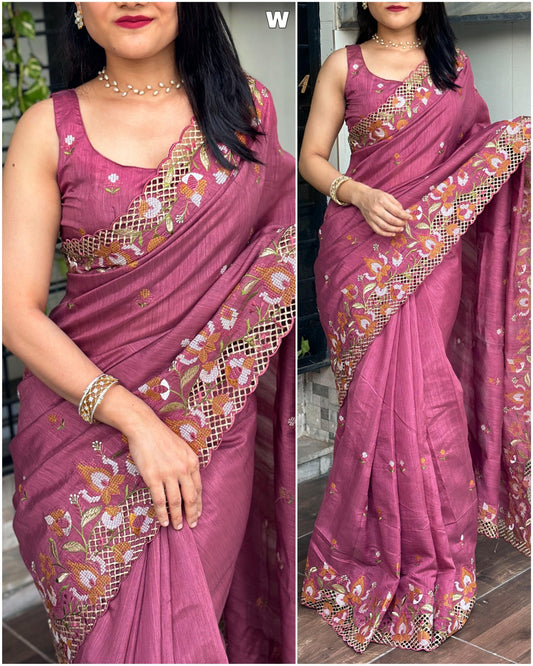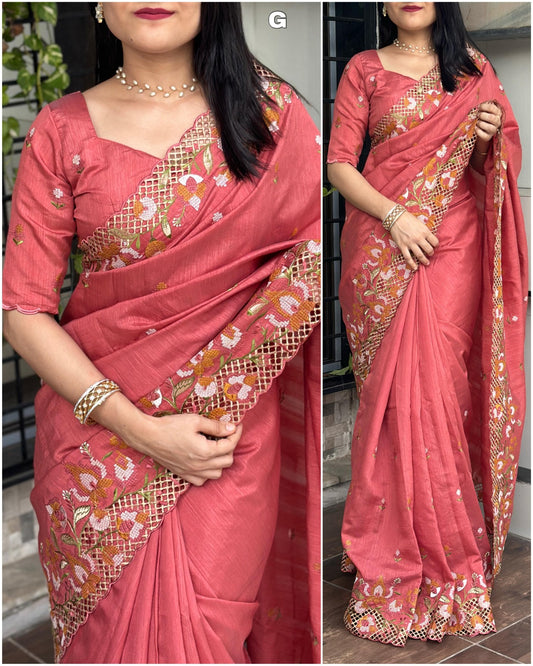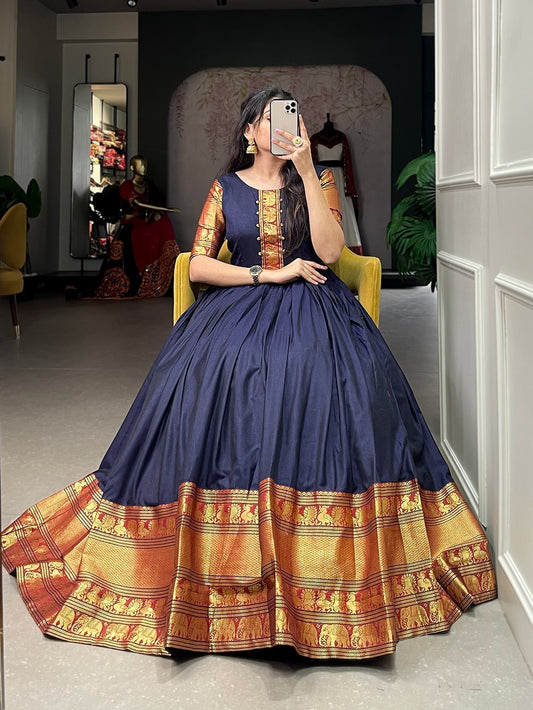Kandagi Weave: A Traditional Craft from Tamil Nadu
Tamil Nadu, the southernmost state of India, is not only known for its rich cultural heritage and historical landmarks but also for its vibrant and diverse textile traditions. Among the many exquisite weaving techniques that have been practiced in the region for centuries, the Kandagi weave stands out as a testament to the craftsmanship and artistic skills of Tamil Nadu's weavers.
History of Kandagi Weave:
The Kandagi weave has a long and storied history, dating back several centuries. It is believed to have originated in the region around Kandagiri, a small village in Tamil Nadu, from which the weave gets its name. Over time, this weaving technique spread to various parts of the state, becoming an integral part of Tamil Nadu's textile heritage.
Technique and Process:
Kandagi weaving is a labor-intensive and intricate process that requires a high level of skill and precision. The weavers use handloom machines to create exquisite patterns and designs on the fabric. One of the distinctive features of Kandagi weave is its use of contrasting colors and intricate geometric patterns.
The weavers work with a variety of natural fibers, including cotton and silk, to produce textiles of exceptional quality. The choice of materials and the meticulous attention to detail result in fabrics that are not only visually stunning but also comfortable to wear.
Distinctive Features of Kandagi Weave:
-
Vibrant Colors: Kandagi weave is known for its vibrant and bold color combinations. Weavers often use a wide range of natural dyes to achieve the desired hues, giving the textiles a lively and eye-catching appearance.
-
Intricate Designs: The hallmark of Kandagi weave is its intricate geometric designs and patterns. These designs are carefully crafted by skilled artisans who have inherited the art form from their ancestors. Common motifs include floral patterns, peacocks, and traditional geometric shapes.
-
Durability: Kandagi textiles are renowned for their durability. The handloom weaving process creates a tight and sturdy fabric that can withstand the test of time, making it a popular choice for clothing and household textiles.
-
Cultural Significance: Kandagi weave is deeply rooted in Tamil Nadu's culture and heritage. It is often used to create traditional garments like sarees and dhotis, which are worn during festivals, weddings, and other significant occasions.
Preservation and Promotion:
Despite the rich history and cultural significance of Kandagi weave, this traditional craft faces challenges in the modern world. Mass production and changing consumer preferences have led to a decline in the demand for handwoven textiles. However, efforts are being made by local artisans and organizations to preserve and promote this unique art form.
Government initiatives, exhibitions, and awareness campaigns have played a crucial role in reviving interest in Kandagi weaving. These efforts not only provide a source of livelihood for the weavers but also help in preserving Tamil Nadu's textile heritage for future generations.
In conclusion, the Kandagi weave of Tamil Nadu is a testament to the artistic excellence and craftsmanship of the region. With its vibrant colors, intricate designs, and cultural significance, Kandagi weave continues to be a cherished part of Tamil Nadu's textile tradition, bridging the gap between the past and the present. It is a reminder of the rich cultural tapestry that defines this beautiful southern state of India.




